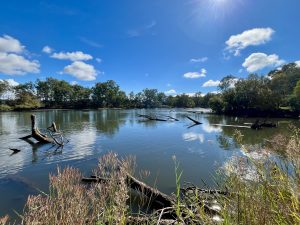One of our favourite inhabitants of the local Box-gum grassy woodland areas is the wombat. To celebrate these solitary nocturnal animals, we’ve named one of the walking trails in Baranduda after them.
The Wombat Nature Trail takes in the country wombats prefer; forested slopes with a good source of grass, shrubs, roots, bark, and moss.
If you can stand still and see a whole range of native grasses, flowers, shrubs and trees, you’re in perfect wombat country. In Baranduda, you’ll most likely find the Bare-nosed wombat, the most common of the three Australian wombat species. They used to be called the Common wombat, but this name is no longer accurate as they are, like so many of our iconic native species, in decline.
All three wombat species eat a variety of native grasses, sedges, forbs, roots, and bulbs. They are in decline due to a combination of native vegetation removal for development and agriculture, competition for food from livestock and rabbits, and being unable to reproduce fast enough to replace individuals lost on roads, shot or succumbing to mange.
Wombats need our help to survive. We need to protect and restore their habitat and take action to treat individuals with mange.
Our Box-Gum stewardship program, supported by the Australian Government’s Bushfire Recovery Program for Wildlife and their Habitat, is doing just that. Join our Rangers for regular habitat restoration mornings in the Box-Gum corridors of the region, and help wombats to recover.
If you find a sick or injured wombat, a first point of call is the dedicated team at Kangaloola Wildlife Shelter. There are also many resources on the web, including Rivers of Carbon, Wildlife Victoria, the Mange management Group and wombat welfare sites.






